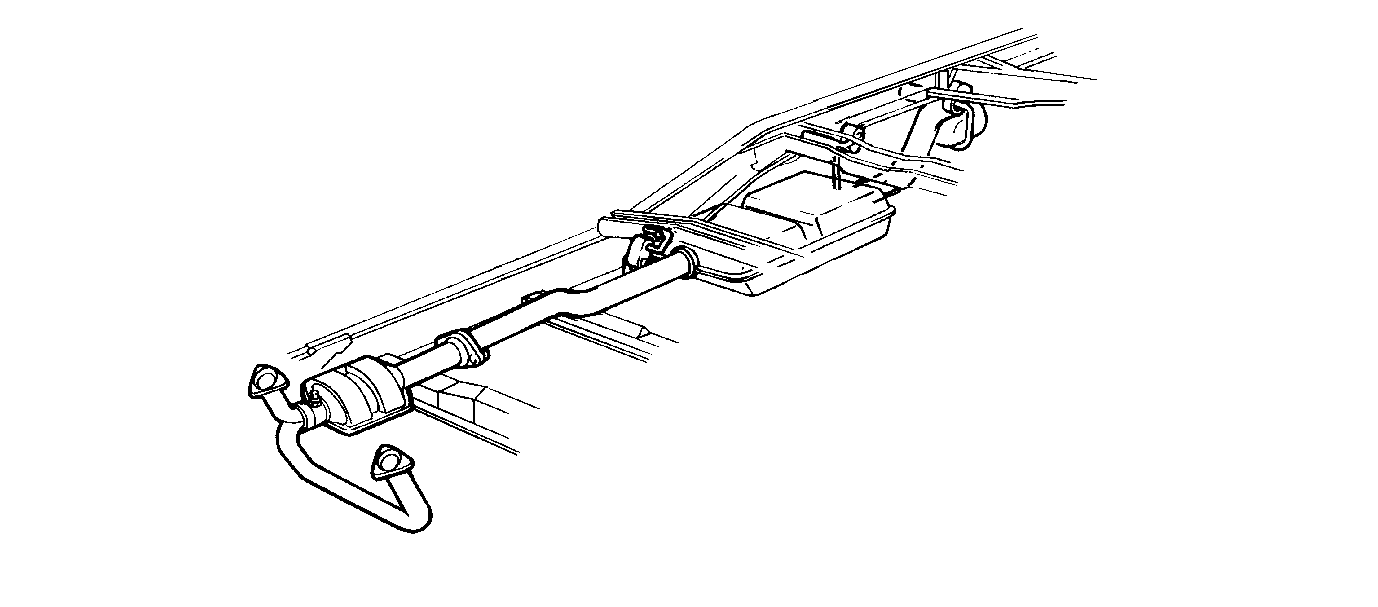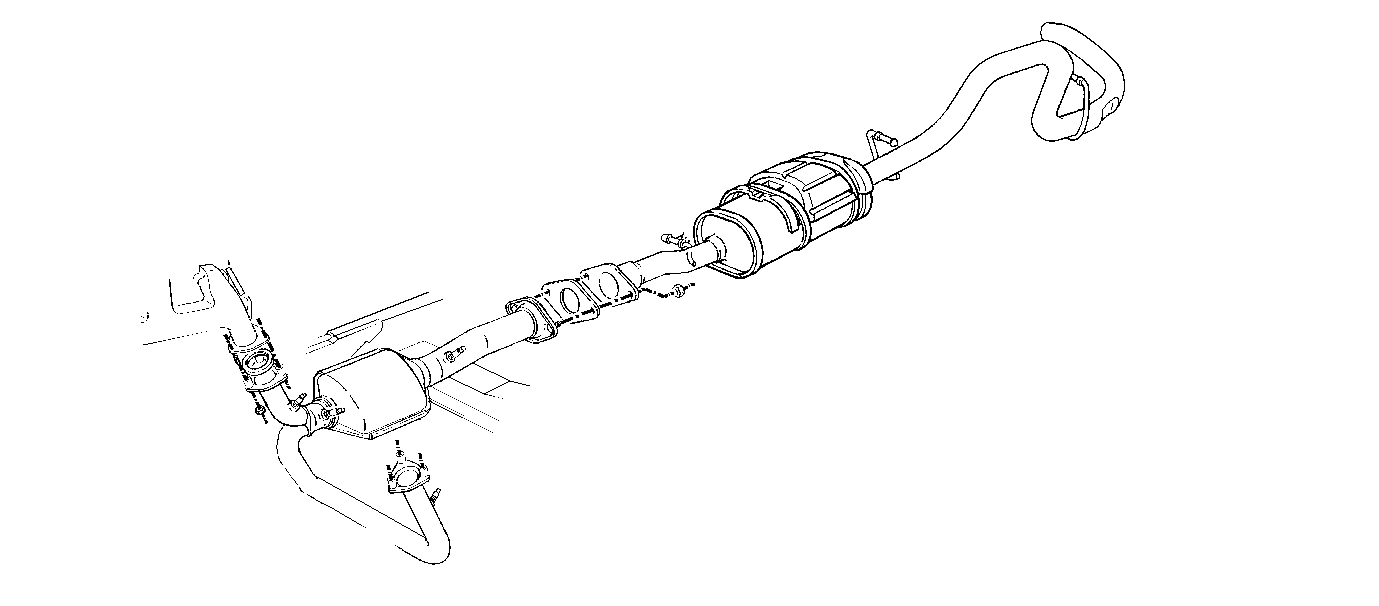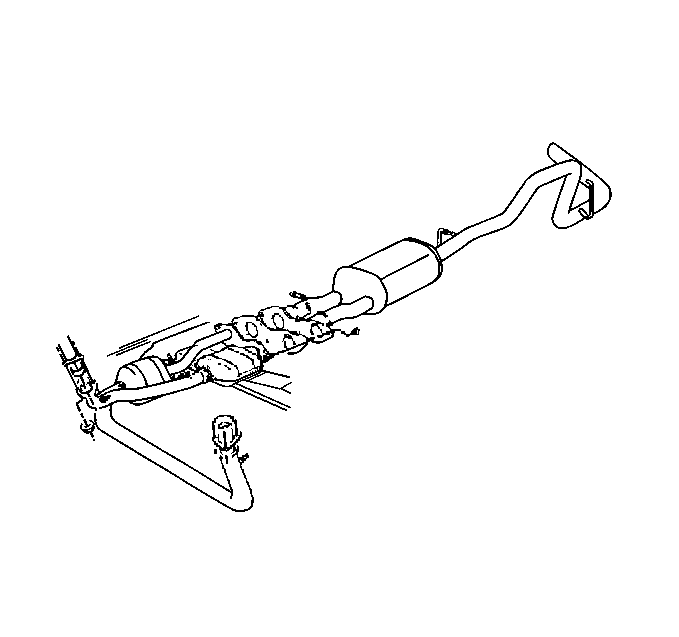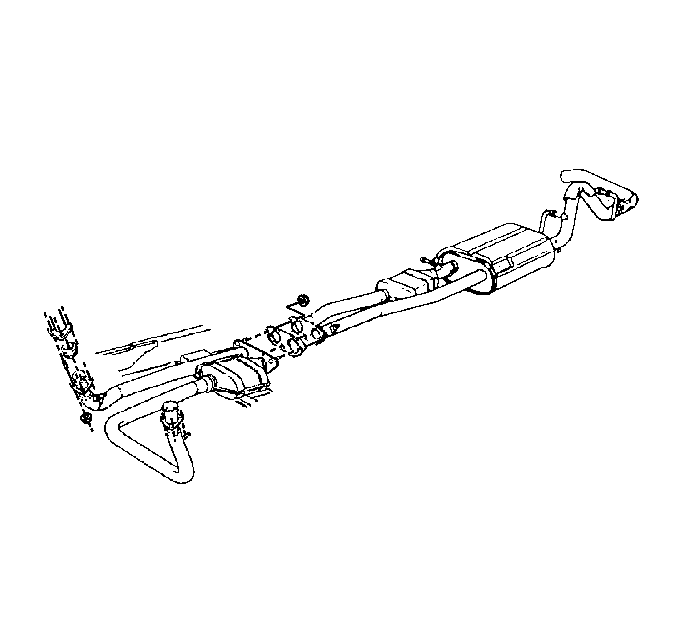General Description
Exhaust system designs vary according to the engine designation and intended use of the vehicle.
The exhaust pipe(s), muffler(s), and tailpipes are standard equipment. The exhaust system uses a ball joint coupling in order to secure the exhaust pipe to the engine manifold.
Other connections on the gasoline engine use a flat flange and gasket, while the diesel engine uses a slip joint coupling design with a clamp and U-bolt.
The exhaust system is suspended by hangers attached to the frame members. These allow some movement of the exhaust system and minimize the transfer of noise and vibration into the vehicle.
Catalytic Converters
The catalytic converter is an emission control device added to the engine exhaust system to reduce hydrocarbon, carbon monoxide and nitrogen oxide pollutants from the exhaust gases. The catalyst in the converter is not serviceable.
Heat shields are used to protect the vehicle and the environment from high temperatures developed by the exhaust system, especially the catalytic converter.
Notice: The catalytic converters require the use of unleaded fuel only. Using leaded fuel will damage the catalytic converters and other emission system components.



The catalytic converter(s) used on gasoline engine vehicles with Light Duty Emissions (vehicles below 8,600 lb GVWR) are part of the Y-pipe and are attached forward of the flat flange.

The catalytic converter(s) used on gasoline engine vehicles with Heavy Duty Emissions (vehicles above 8,600 lb GVWR) are both part of the Y-pipe assembly and the muffler assembly. One converter is attached forward of the flat flange and the second converter is mounted rearward of the flat flange.


The diesel engine uses a catalytic converter, added to the exhaust system in order to reduce smoke (particulates). The catalytic converter operates at normal exhaust system temperature; there is no significant temperature increase as a result of oxidation of particles.
Individual exhaust system replacement components versus one complete assembly will vary upon body/chassis and engine designation.
Removing Exhaust Parts
Caution: Always wear protective goggles and gloves when removing exhaust parts as falling rust and sharp edges from worn exhaust components could result in serious personal injury.
When removing exhaust components, an accumulation of dirt and corrosion can make work difficult. Using a penetrating oil on the threads of bolts can assist in the removal of these components.
Installing Exhaust Parts
Notice: When jacking or lifting the vehicle from the frame side rails, make sure the lift pads do not contact the catalytic converter as converter damage will result.
Important:
• Apply sealer GM P/N 9985020 or equivalent to all
slip joint connections. • When installing the exhaust pipe to the engine manifold, always
use a new seal and nuts. Clean the engine manifold stud threads with a wire
brush before installing the new nuts.
When installing a new exhaust pipe, muffler, or tailpipe, on any model, check for proper alignment. Rattles and noise vibrations in the exhaust system are usually caused by the misalignment of parts. When aligning the system, leave all bolts and nuts loose until all parts are properly aligned. Tighten the exhaust system components starting with the flat flange, then the engine, and finally the U-bolts,if equipped.
Damaged exhaust system hangers, hanger brackets, and clamps should be replaced to maintain exhaust system alignment.
